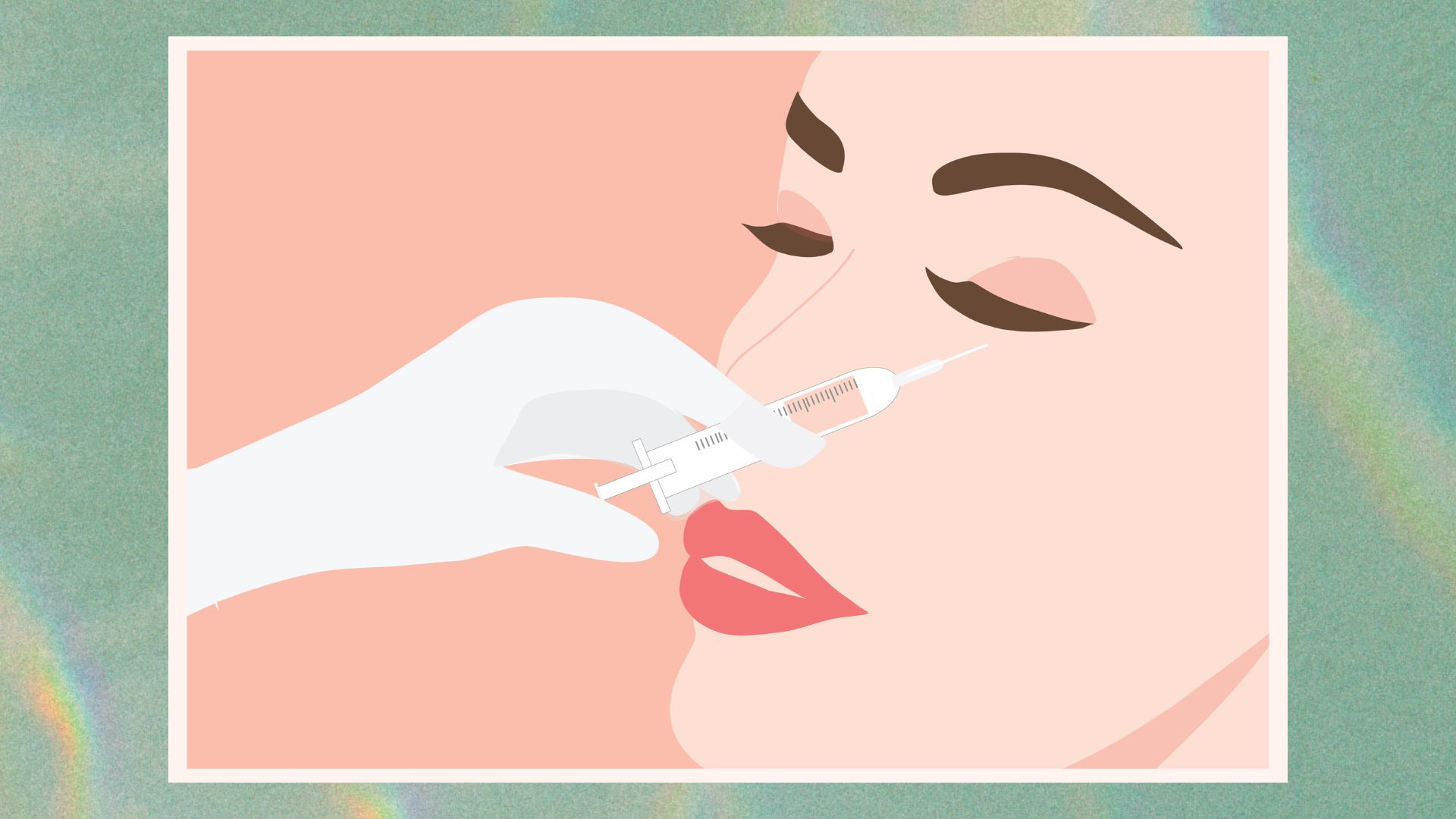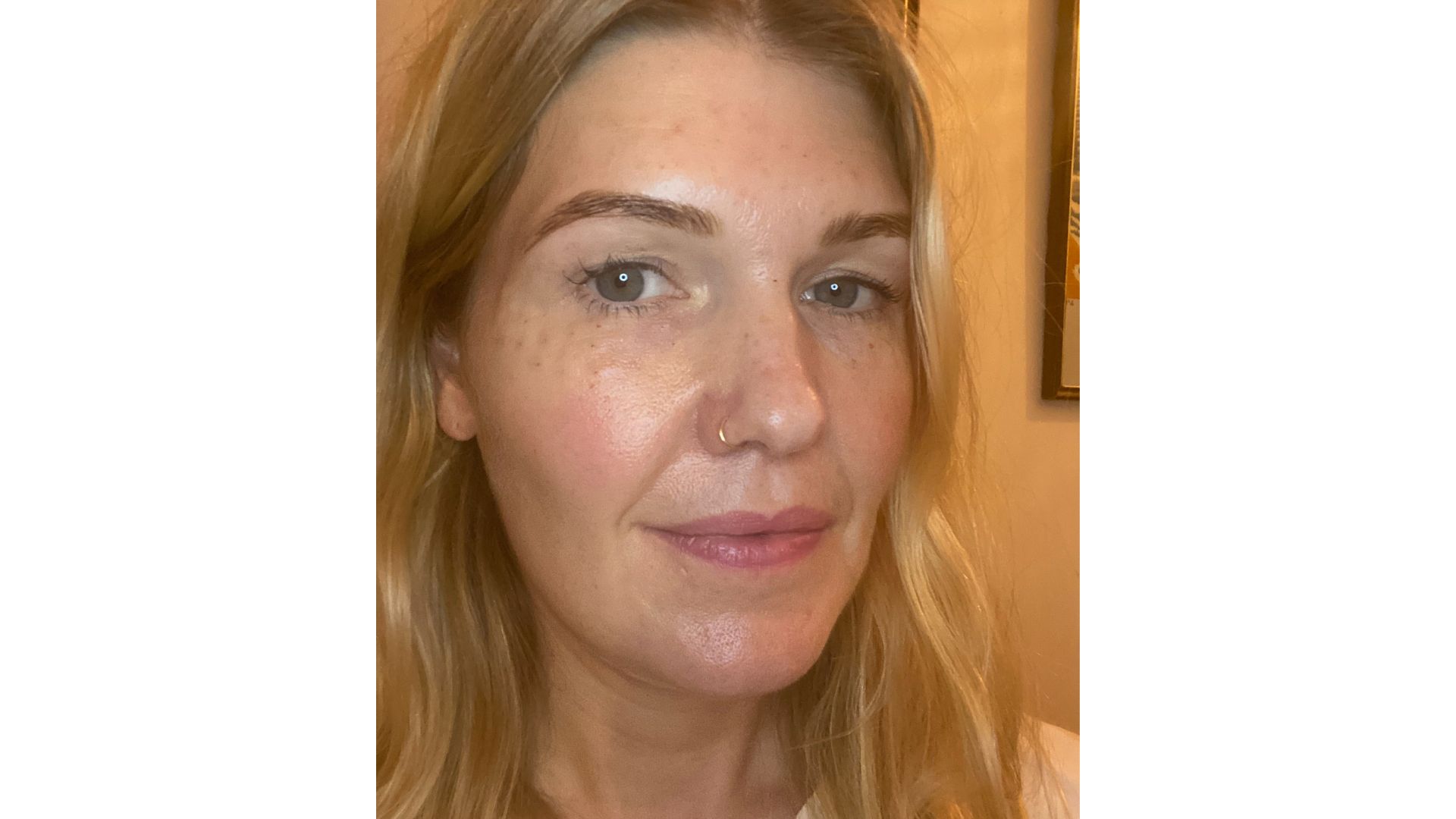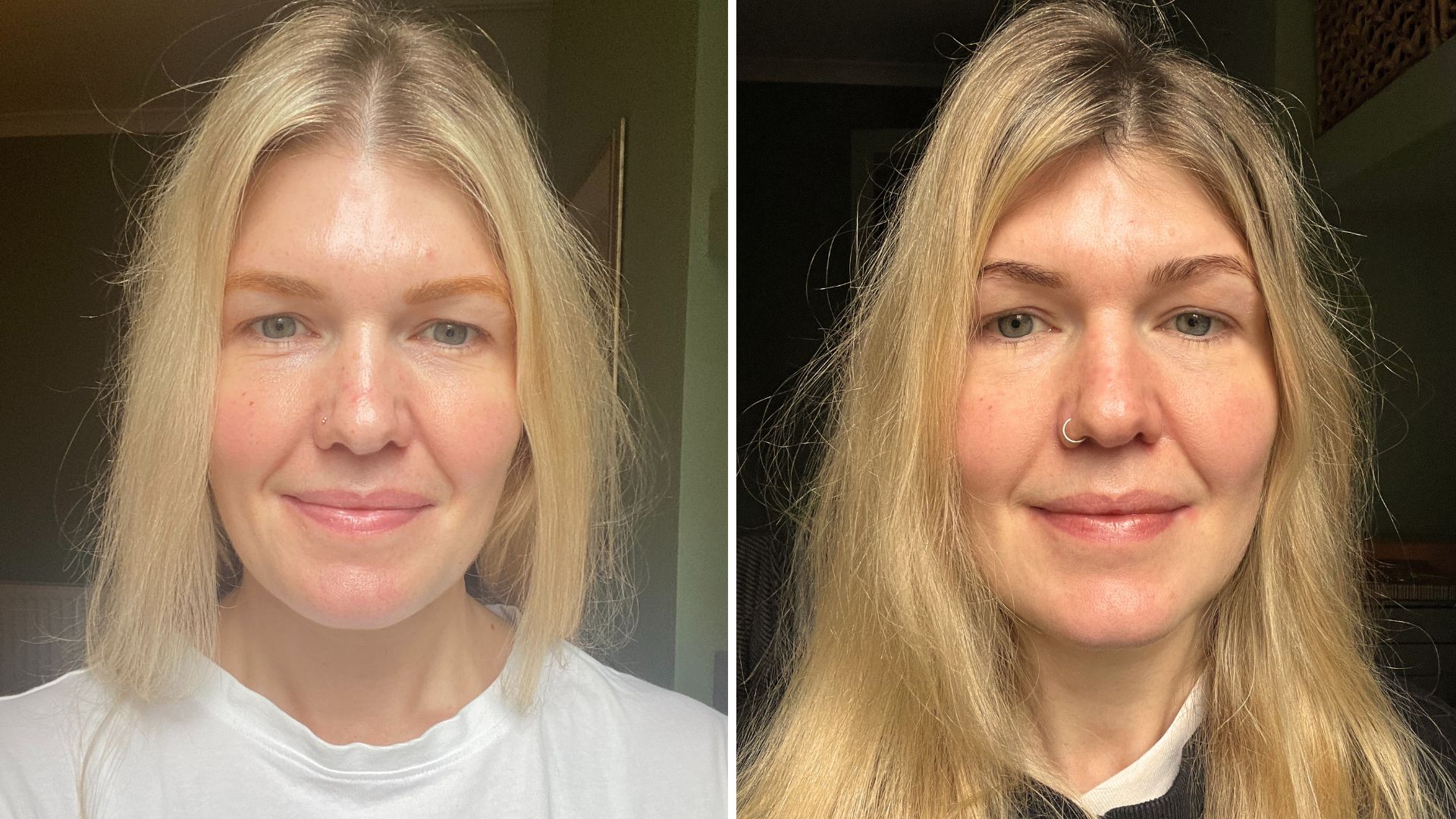Everyone's talking about polynucleotides, but did this injectable improve our beauty editor's dark circles?
Yes, I tried 'salmon sperm' injections - but there's more to this trending treatment than its attention-grabbing nickname...


Polynucleotides being dubbed salmon sperm injections reminds me of when PRP was branded the 'vampire facial.' It's intriguing and accurate enough, but also kind of... alarmist. As I found in the process of this polynucleotide review, there's a lot more to this treatment than its infamous nickname.
For the uninitiated, polynucleotides are one of the hottest 2025 treatment trends, partly thanks to self-confirmed A-List fan, Jennifer Aniston. This injectable, which, yes, does include fish DNA, promises to improve skin structure, texture, quality and tone. It's also particularly good for the under-eyes, an area that's as common a bugbear as it is notoriously tricky to treat with traditional 'tweakments' like filler.
That's certainly what got my attention. Imagine, if you will, an injectible-curious beauty editor, turning 40 this year, with a transparent Celtic skin tone, busy work life and a toddler who frequently sees 5am as an ideal time to start his day. God help my dry, dark, drawn-looking under-eyes, but polynucleotides offered a shiny beacon of hope.
What happened when our beauty editor tried a polynucleotide treatment
What do polynucleotides do?
Firstly - a brief polynucleotides explainer. This treatment injects a solution into your skin that's made up of purified DNA fragments extracted from fish, usually salmon (although in the case of my treatment, it was trout - more on that later) And, yes, said DNA is extracted from sperm, which is a bit of an uncomfortable thought, but nothing unsavoury happens in the process, promise. It's simply a waste product of the food industry.
This particular DNA is used because it's very compatible with human DNA, and once it's in your skin will stimulate your cells to produce more collagen to plump, elastin for bounce and structure, as well as hyaluronic acid for hydration. Most dermatologists recommend having three treatments for visible results, although you can see improvements after one.
Are polynucleotides better than Profhilo?
This treatment holds more similarities with skin boosters like Profhilo than Botox and filler, in the sense that it won't dramatically freeze a line, or re-shape a feature on your face. Instead, it restores what's naturally there but may have depleted over time. However, many doctors prefer it to more famous hyaluronic acid-based boosters, which as our Profhilo review entails, hydrate well but won't necessarily have a long-term effect on skin structure or quality.
What's a polynucleotide appointment like?
When I decided to write this polynucleotide review, the bit I was looking forward to the least was the actual appointment. I wouldn't describe myself as needle phobic (9 tattoos, 10 piercings and counting) But I was aware that, despite Kim Kardashian famously branding this a 'salmon sperm facial', the experience wasn't going to be facial-like at all.
Sign up for the woman&home newsletter
Sign up to our free daily email for the latest royal and entertainment news, interesting opinion, expert advice on styling and beauty trends, and no-nonsense guides to the health and wellness questions you want answered.
This a treatment is about results, not relaxation, so I visited expert consultant dermatologist, Dr Hiba Injibar at Dermasurge Clinic on Harley Street. Dr Hiba was working with Vitaran polynucleotides which utilise trout DNA rather than salmon. Because trout is farmed rather than wild, this allows for watertight quality control and ticks all the boxes to get the EU safety CE-mark. Which is good to know about something being injected in your eye area, isn't it?
I really needn't have worried about the appointment - it was quick and (almost) painless. Numbing cream was applied around my eyes and I kicked back for ten minutes in Dr Injibar's pristinely luxurious clinic. Then came the injections - perhaps 30 total including a smattering on my forehead - which took even less time than the wait and ranged from 'I couldn't feel that at all' to a tiny little sting.
Compared with most needle-based tweaks, polynucleotides are very superficial injections and therefore no biggie on the discomfort front - I found these far less stingy than skin boosters, or the brilliant but undeniably ouchy Ultherapy. Afterwards, I was warned I'd look a bit bumpy - which I did, as you can see below - but I still happily took public transport home and as far as I could tell my fellow commuters weren't unduly alarmed.

My post-injection bumps, two hours after the treatment
How quickly do polynucleotides work?
Downtime-wise, I only had just those little bumps at the injection sites to contend with, and they went down quickly. I met a friend for coffee the next morning and didn't say anything to see if she would. She didn't, so they were either imperceptible by that point or she was being uncharacteristically coy with me.
After that, it's a waiting game for results. Hydration benefits can be seen within a week or two, but as with any collagen and elastin-boosting treatment, full results will take a month plus as your skin takes time to produce the good plumping stuff.
The ideal situation is to have a course three of treatments, two to four weeks apart, then top-ups every six months, but I saw a difference in skin quality, shadowing and fine lines after one. So much so I'm willing to share some makeup-free before and after shots. It's always confronting putting this kind of thing out there (kindly ignore the spotty nose in pic 1 and the dodgy roots in pic 2) but I think you get my point:

Before (l) and two months after (r) polynucleotide treatment
Are polynucleotides worth it?
That very much depends on what you're after, results-wise. For me they very much have been, and I now fully intend to commit to a three-session course. Polynucleotides suit my needs because I want gradual improvements, not just on lines but overall skin texture and tone. I love that this treatment is quick with minimal downtime and that it'll never look unnatural, because it simply repairs and boosts what you've got.
But (always a but) if you want to dramatically re-volumise an area or completely eradicate a line - or several - this treatment won't do that. Traditional fillers and injectable toxins (like baby Botox) will probably suit you better.
If you're not sure what tweakment might suit your skin hopes and dreams, but are keen to explore options the very best thing you can do is speak to an aesthetic expert. And by expert, I don't mean any old place on the high street with a special offer, I mean a doctor with knowledge of facial anatomy, who gives you all the information, medically-founded advice and never, ever pressures you to have a treatment.
How much do polynucleotides cost?
As with most widely-available treatments, how much you can expect to pay for polynucleotides varies depending on where you go and also how large an area you have treated. As a general guide, expect to pay between £300-600 per session, with many clinics offering a set price for a course of three sessions, which can work out better value.

As woman&home's Beauty Channel Editor, Fiona Mckim loves to share her 15+ years of industry intel on womanandhome.com and Instagram (@fionamckim if you like hair experiments and cute shih-tzus). After interning at ELLE, Fiona joined woman&home as Assistant Beauty Editor in 2013 under industry legend Jo GB, who taught her to understand ingredients and take a cynical approach to marketing claims. She has since covered every corner of the industry, interviewing dermatologists and celebrities from Davina McCall to Dame Joan Collins, reporting backstage at London Fashion Week and judging the w&h Beauty Awards.
-
 The eye cream Reese Witherspoon uses to banish 'concealer creasing' and puffiness was already a bargain - now it's on sale
The eye cream Reese Witherspoon uses to banish 'concealer creasing' and puffiness was already a bargain - now it's on saleThe inexpensive eye cream Reese Witherspoon uses to reduce puffiness, dark circles and creases in her concealer is even more affordable than usual today.
By Charlie Elizabeth Culverhouse Published
-
 Cat Deeley's simple approach to self-care makes it so easy to feel good every single day
Cat Deeley's simple approach to self-care makes it so easy to feel good every single dayNo matter how little free time you might have
By Charlie Elizabeth Culverhouse Published